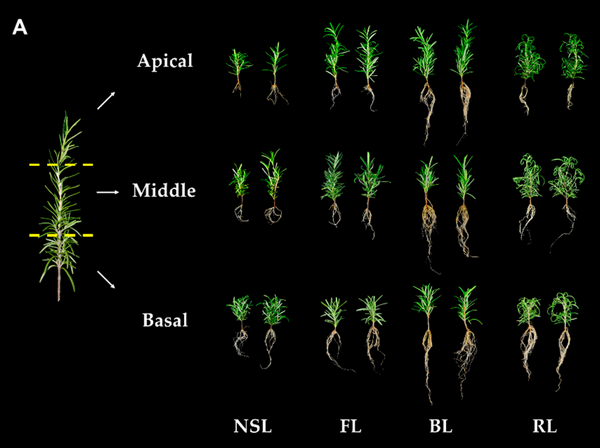Research shows that irregular rooting of rosemary stem cuttings, causes differences in either stem maturation or responses to growth conditions, restricts uniform production.
Lighting
Here, rooting efficiency of apical, middle, and basal cuttings from rosemary stems was evaluated by controlling light conditions to prevent irregular rooting. The types of light applied to the cuttings were natural sunlight (NSL), fluorescent, red, and blue (BL) light.
Among these light sources, BL significantly induced root growth of not only basal cuttings, but also apical and middle cuttings, whereas NSL induced poor root formation in apical and middle cuttings. In particular, the roots of apical cuttings exposed to BL grew twice as fast as those exposed to other types of light.

Source: MDPI
The overexpression of BL-induced IAA synthetic genes confirmed the rooting patterns. IAA synthetic genes were significantly upregulated by BL in the apical and middle cuttings. Irradiating with 50 μmol photons m−2 s−1 BL resulted in similar root production levels among the cutting positions with high biomass, guaranteeing the successful production of uniform cuttings.
Thus, the application of proper high-intensity BL promoted healthy, similar-quality rosemary cuttings among stem cutting positions.
Click here to access the complete research.
